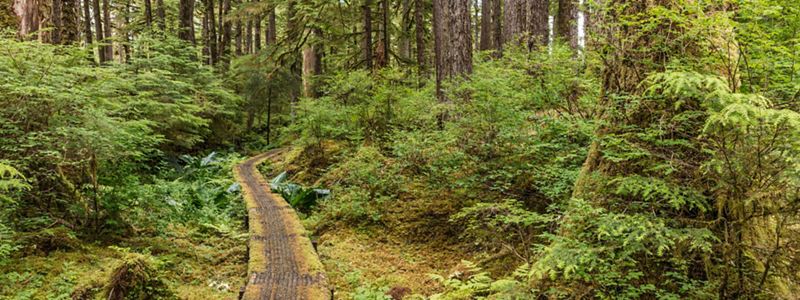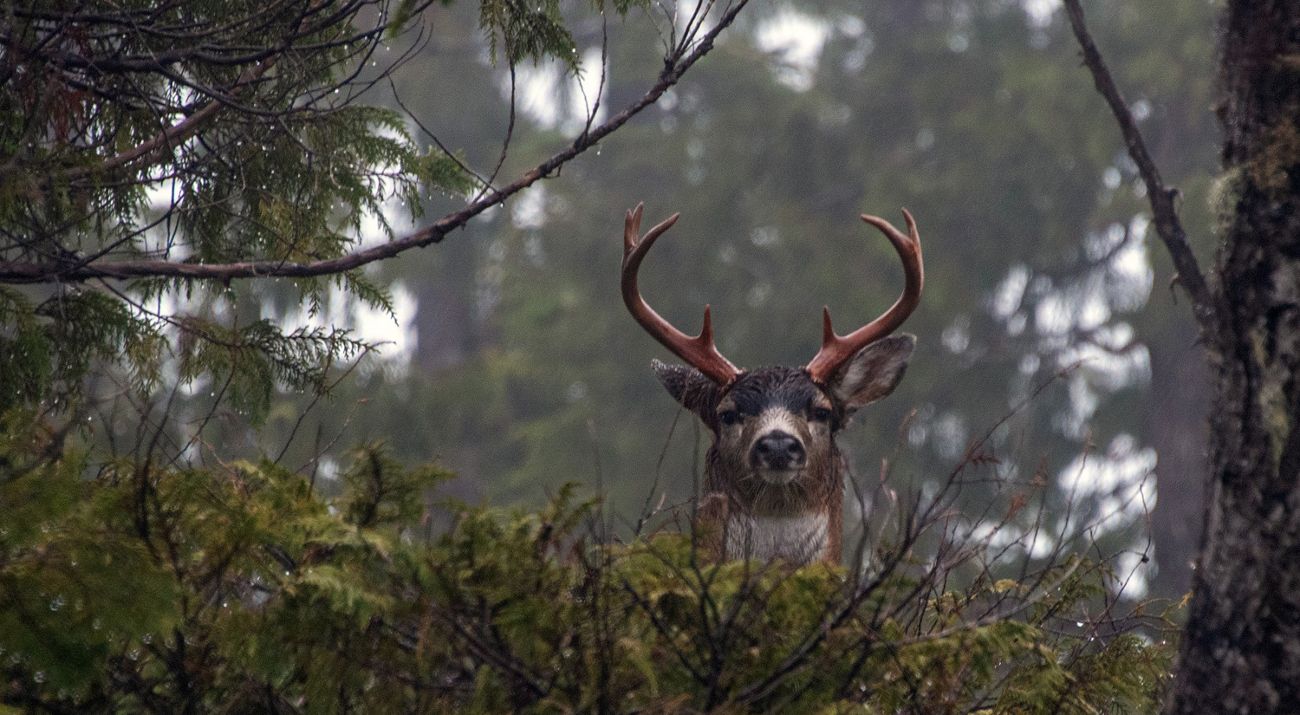Alaska’s Iconic Wildlife
Alaska’s healthy lands and waters are home to amazing animals.
Whales, wolves and caribou. Deer, moose and bald eagles. The wildest, tastiest salmon on Earth fattening up the planet’s biggest, bossiest bears. Alaska’s incredible landscape supports some of North America’s most iconic wildlife. These charismatic species are front and center in our global campaign to prevent some of the most catastrophic impacts possible due to global climate change.
Learn more about a few of Alaska’s cute critters and how TNC Alaska is working on behalf of the state’s people and animals to preserve this wild, wonderful place.
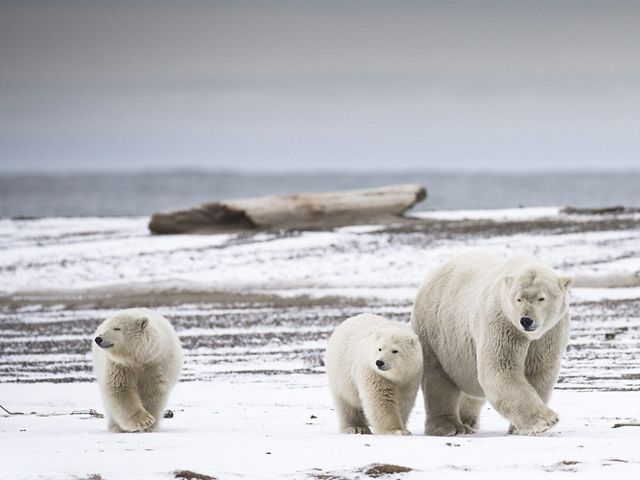
Polar Bear (Ursus Maritimus)
Quick Facts
- Polar bear populations in eastern Alaska and western Canada have fallen 40% since the start of the new millennium.
- Human activities pose one of the top threats to the decreasing polar bear population.
- Within the National Petroleum Reserve—Alaska lies a several-mile-wide coastal band designated as critical habitat for denning polar bears.
Description
Polar bears are often called sea bears or ice bears. You can tell them apart from other bears because they have white fur and are very large. Males average 600-1,200 pounds and 8-10 feet in length, while females average 400-700 pounds and are 6-8 feet long. Polar bears have long necks and narrow heads. Their fur is thick, with a water-repellent top layer and dense underlayer. Small bumps cover the bottom of their big paws, and their toes are webbed. This helps them to walk on the ice and to swim. They keep warm in part due to black skin that absorbs the heat of the sun, along with a thick layer of fat. As you might guess, they have long, sharp claws. They live to be around 25 years old.
Habitat
Built to survive cold temperatures, polar bears are found only in the circumpolar Arctic—in the U.S., Canada, Greenland, Norway and Russia. Polar bears are born on land but spend much of their life on sea ice, which forms on top of seawater in the Arctic Ocean. Polar bears use the ice to travel, hunt, breed and raise cubs.
Reproduction
Polar bears breed every two to four years. They mate in the spring, and females usually give birth to between one and four cubs in each litter. A polar bear pregnancy can last up to 265 days. The cubs stay with their mother until they are at least two years old.
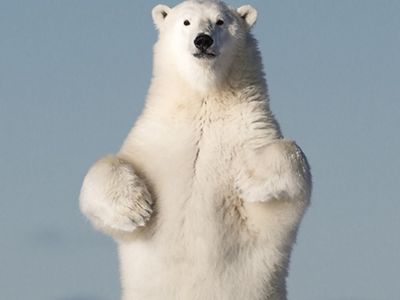
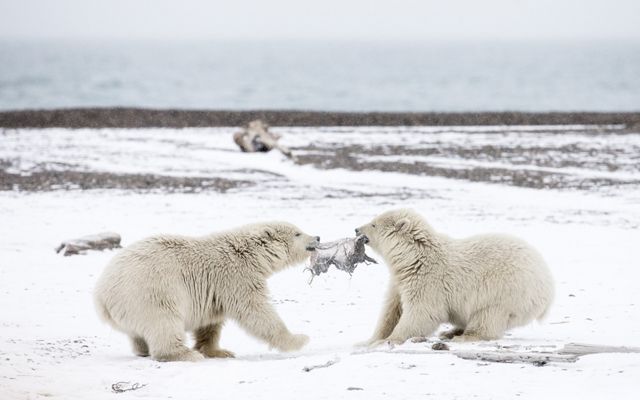
Diet
The primary prey of polar bears are ringed and bearded seals, but they also eat beluga whales and walruses. Polar bears are considered marine mammals due to their dependence on the ocean for food and habitat.
Predation
The largest land carnivore on Earth, polar bears have no natural predators other than humans.
Threats
The impacts of climate change, including the melting of sea ice, led to the classification of polar bears as a threatened species under the Endangered Species Act in 2008. Since polar bears rely on the sea ice to get food, the decline of this species due to starvation is a major concern. Learn about how Lynn Scarlett, TNC’s former chief external affairs officer and former deputy secretary of the interior under George W. Bush, helped classify the polar bear as the first species threatened by climate change.
How TNC’s Work Helps Polar Bears
The Nature Conservancy in Alaska is working hard to address the threat of climate change here at home and around the world, by helping Alaska, its tribes and communities preserve Alaska’s vast natural carbon stores like forests and peatlands, transition to renewable energy and plan for climate adaptation.
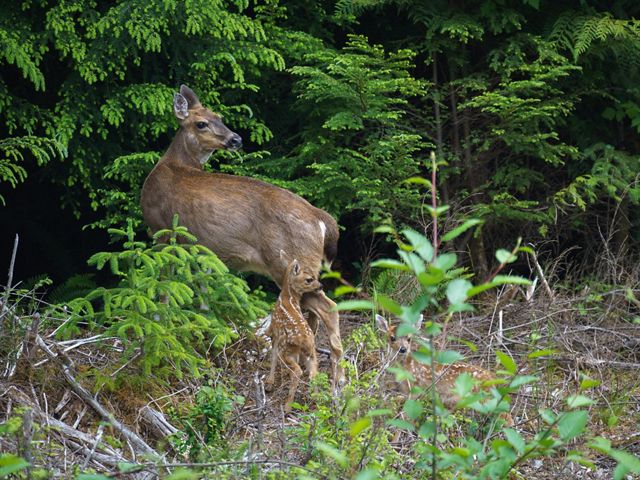
Sitka Black-Tailed Deer (Odocoileus Hemionus Sitkensis)
Quick Facts
- There are ~200,000 Sitka black-tailed deer in Alaska.
- Sitka black-tailed deer are the primary food source for the Alexander Archipelago wolf.
- Deer often move to higher elevations in the summer & then head lower down the mountain as winter brings deep snow.
- Male deer will fight each other for dominance during mating season & will mark their territory by rubbing their antlers on trees.
Description
Sitka black-tailed deer are a subspecies of the mule deer and are known for their small, compact body and black tail. In the summer they are a reddish brown, but in winter their coat becomes a brownish gray. They have white patches on their neck and forehead. At birth, fawns have reddish-brown coats with white spots, which begin to change after a few months. Females (does) average 80 pounds and males (bucks) average 120 pounds. The males sport rather small antlers, which they shed in the deep of winter but grow back again in the spring. Sitka black-tailed deer typically live to be about 10 years old, although they can grow as old as 15.
Habitat
The name “Sitka” has its roots in the community of Sitka, Alaska, which sits on Baranof Island, one of more than a thousand islands in Southeast Alaska. The name Sitka is derived from Shee Atiká in Lingít, or the Tlingit language, which means “people on the outside of Shee (Baranof Island).” It is said that the Tlingit first occupied the area that is now Sitka at the end of the last ice age, around 10,000 years ago. The Kiks.ádi clan of Tlingits have stewarded the area ever since.
Sitka black-tailed deer are native to the temperate coastal rainforests of Southeast Alaska and northern British Columbia but can also be found further north in Yakutat and Prince William Sound and on Kodiak and Afognak islands. Sitka black-tailed deer rely on old-growth forests for food and survival.
Reproduction
Does begin reproducing at around two years of age and typically have one to two fawns every year for the next decade. Twins are more common when there is a lot of food available. Fawns are born in late spring or—less commonly—summer.
Diet
During the summer, Sitka black-tailed deer feed on green, leafy plants and shrubs within the forest. They pack on most of their weight during the summer to build up fat reserves for the winter. In the winter food is harder to find, and the deer will eat lichen and bunchberry, the leaves and twigs of bushes like blueberry and trees like yellow cedar and hemlock, as well as kelp washed up on exposed shorelines.
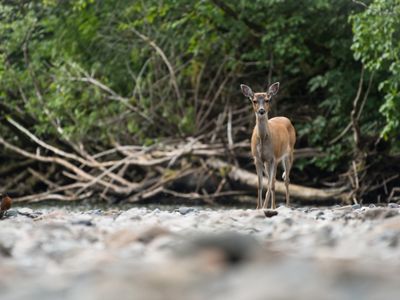
Predation
Sitka black-tailed deer are critical to healthy, functioning ecosystems. They are a food source for Southeast Alaska’s large predators—like bears and wolves—and are important for subsistence-hunting communities and many families.
Threats
Over the last century, Southeast Alaska was the site of intense timber harvest that significantly changed the forest by logging the rare old-growth forest stands with the biggest trees—the trees most critical to the Sitka black-tailed deer’s survival. It is estimated that as much as half of the big old-growth trees have been logged. While the forest is slowly growing back, the dense new young-growth tree stands that replaced the old-growth trees block out the sun. These areas contain little to no vegetation for deer to eat and are unable to shield deer from snow like the large canopies of the old-growth forests did. This damaged habitat leaves Sitka black-tailed deer increasingly vulnerable to heavy winter snows. Without restoration, their forest habitat will continue to deteriorate, sending ripples through the ecosystem and affecting species throughout the food web.
How TNC’s Work Helps Sitka Black-tailed Deer
TNC is doing the research to identify the most important deer habitat. We’re working with partners like the U.S. Forest Service and regional community forest partnerships to use that science to decide which forests and streams we need to restore. We’re also working with the U.S. Forest Service to ensure that the forests are managed in a way that supports wildlife. Lastly, we’re reaching out to the public and educating them about the benefits of healthy forests for Sitka black-tailed deer. To find out more about TNC Alaska’s deer conservation efforts, read this blog on Cool Green Science.
We Can’t Save Nature Without You
Sign up to receive monthly conservation news and updates from Alaska. Get a preview of Alaska’s Nature News email.
